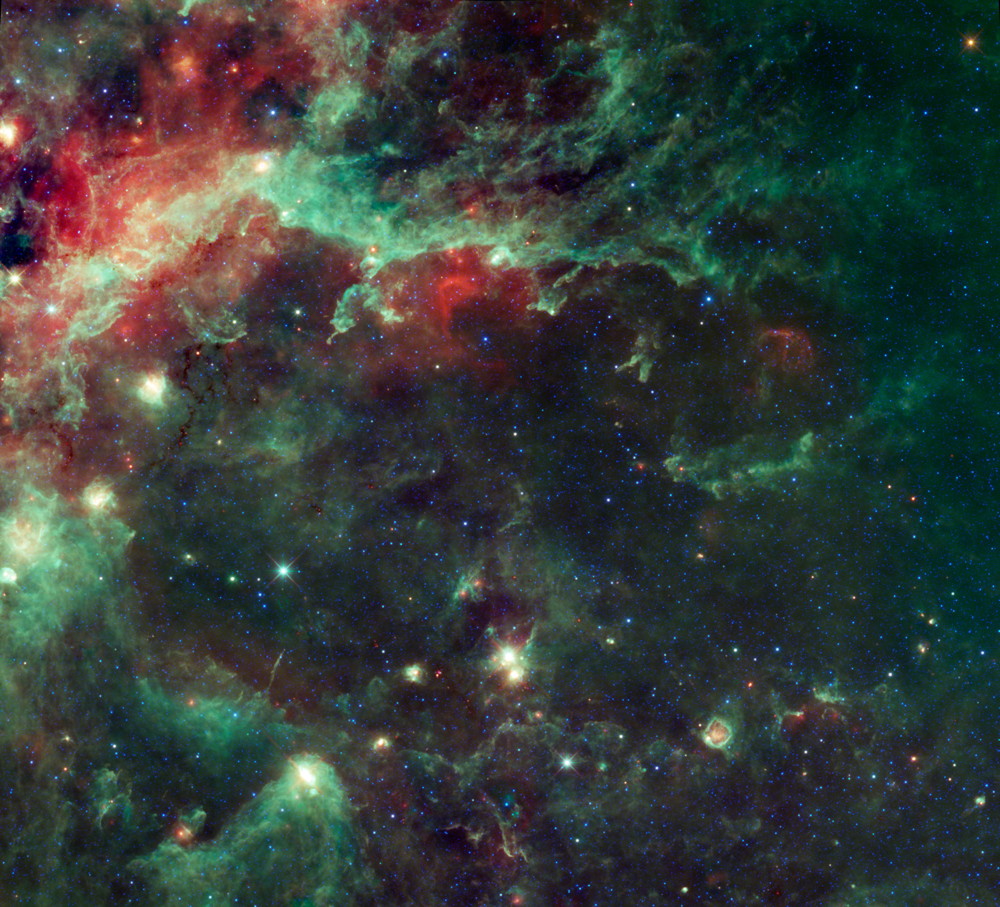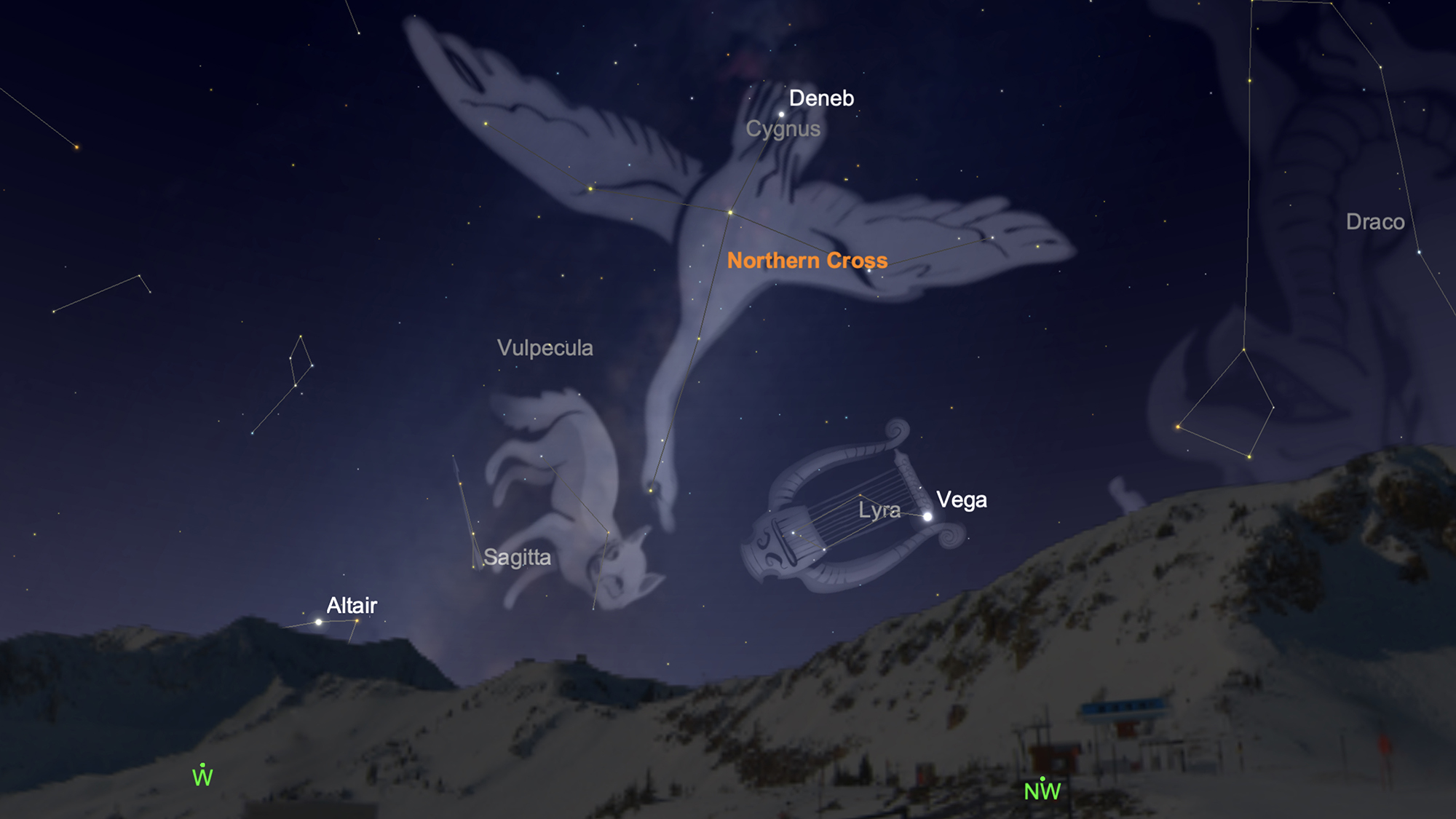Cygnus constellation: Facts about the swan
Reference article: Facts about Cygnus, the swan.

Cygnus the swan is a distinctive cross-shaped constellation best seen in the Northern Hemisphere during the summer and fall months around September. The celestial waterfowl swims through the river of the Milky Way and is said to be the disguised Greek god Zeus on his way to a tawdry tryst.
How to find Cygnus
Cygnus is a beautiful constellation that is fairly easy to spot in the night sky, especially if you are far from light pollution. The best way to locate it is by finding five stars in a cross shape, called the Northern Cross, that make up its bulk, which run through the Milky Way. You can find the Northern Cross in the sky year around, but it changes position with the seasons, according to EarthSky magazine.
One good indication that you are looking at Cygnus is to search for the bright star Deneb, which sits at the swan's tail and whose name comes from an Arabic word meaning "tail". It was originally part of the Arabic phrase "Al Dhanab al Dajājah," meaning "the hen's tail."
Deneb is part of a trio of nearby bright stars known as the Summer Triangle, along with Altair and Vega. The star is a blue supergiant, 60,000 times more luminous and about 20 times more massive than our sun, located somewhere between 2,100–7,400 light-years from Earth.
The swan's tail is a variable star, meaning its brightness changes over time as its surface expands and contracts violently. It is nearing the end of its life and is expected to explode as a supernova sometime in the next few million years.
Related: What are star charts?
The Earth's axis wobbles over thousands of years and points at different stars, which occupy the role of the North Star. Currently, the North Star is Polaris but Deneb will take over sometime around the year 9800.
Breaking space news, the latest updates on rocket launches, skywatching events and more!
At the center of the Northern Cross is Gamma Cygni, also known as Sadr, whose name comes from the Arabic word for "the chest," according to Universe Today. It's also a blue-white supergiant, and is located approximately 1,800 light-years from Earth.
The swan's head, or top of the cross, is a star called Albireo. It is not particularly bright but is said to be a favorite of astronomers because, when seen through a small telescope, it reveals itself to be two stars close together, according to the Society for Popular Astronomy.
Out past the left side of the cross, within Cygnus' wing, is a beautiful nebula called the Veil Nebula. Back behind Deneb is another spectacular object known as the North America Nebula. Both require binoculars or a telescope and dark sky conditions to be seen.
The mythology behind Cygnus
There are several different myths behind Cygnus. In one, Zeus became enamored with the nymph Nemesis, who fled from the god's unwelcome advances by changing herself into various animals, according to Ian Ridpath's Star Tales, which compiles stories about constellations. Nemesis' godly pursuer kept up with her by transforming into even larger and swifter animals, eventually landing in the form of a swan, in which he caught and raped her.
In other stories, Zeus took a swan's shape to seduce Leda, wife of King Tyndareus of Sparta, who also slept with her husband on the same night. Leda gave birth to an egg, out of which came the twins Castor and Pollux (represented in the constellation Gemini) and the beautiful Helen of Troy.
Related: Celestial swan soars over castle ruins in amazing photo
Another version of that tale states that Leda actually gave birth to two eggs, one which produced the male twins, and the other which produced Helen and her sister Clytemnestra. To make things stranger, Zeus was said to be the father of Helen and Pollux, while Tyndareus fathered Clytemnestra and Castor.
Chinese accounts call Cygnus "Tianjin," or a ford or bridge, which crosses the Milky Way, known as "Tianhe," or celestial river, Ridpath writes. Ancient Hindu astronomers associated the starry pattern with the "Brahma Muhurta" ("Moment of the Universe"), a period between 4:24 and 5:12 in the morning that is considered the best time to start the day, according to Universe Today.
Additional resources:
- Download this gorgeous image of the Cygnus star nursery for your computer's wallpaper.
- Here's another impressive image of Cygnus captured by an amateur astronomer.
- Learn more about how the night sky constellations got their names.

Adam Mann is a journalist specializing in astronomy and physics stories. His work has appeared in the New York Times, New Yorker, Wall Street Journal, Wired, Nature, Science, and many other places. He lives in Oakland, California, where he enjoys riding his bike. Follow him on Twitter @adamspacemann or visit his website at https://www.adamspacemann.com/.

